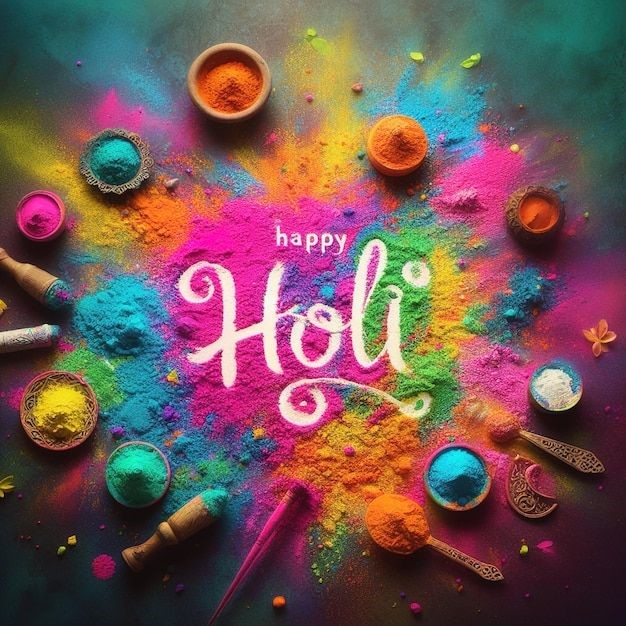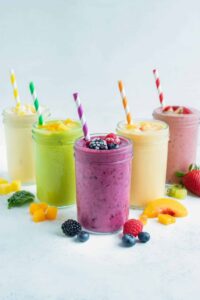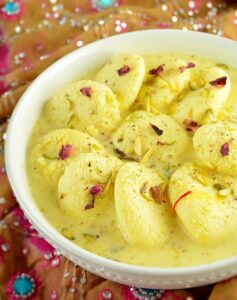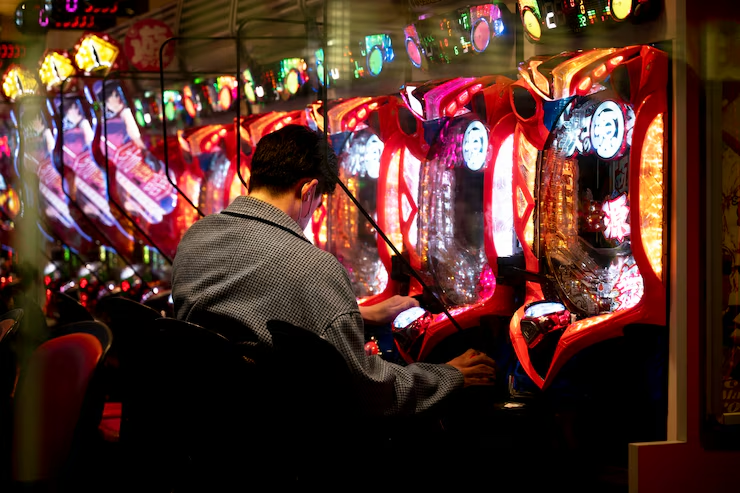
Holi, the festival of colors, is one of the most vibrant and joyful celebrations in India and across the globe. Holi 2025 promises to be an even grander affair, bringing people together to celebrate love, unity, and the victory of good over evil. This festival, known for its playful spirit, includes throwing holi colour on friends and family, singing, dancing, and indulging in delicious festive treats. As we prepare for Dhulandi 2025, the main day of color play, it is essential to understand the significance of Holi, the cultural practices surrounding it, and some useful tips on how to remove holi colour from face safely.
The History and Significance of Holi 
Holi is deeply rooted in Hindu mythology and has been celebrated for centuries. The festival marks the arrival of spring and the triumph of good over evil. One of the most famous legends associated with Holi is the story of Prahlad and Holika. Prahlad, a devout follower of Lord Vishnu, was saved from the fiery trap of his evil aunt Holika through divine intervention. This event symbolizes the power of faith and righteousness.
The day before Dhulandi 2025, people observe Holika Dahan, where bonfires are lit to commemorate this ancient tale. This ritual signifies the burning away of negativity and evil forces, paving the way for joy and positivity. The following day, Dhulandi, is when the real celebration begins, with people smearing each other with Holi 2025 and sharing festive cheer.
Dhulandi 2025: The Grand Celebration of Colors 
Dhulandi 2025 will be celebrated with unparalleled enthusiasm across India and in various parts of the world. In 2025, Dhulandi will be celebrated on March 14, marking a day when people across India and around the world come together to rejoice with colors, music, and festive cheer This day is all about letting loose and embracing the festive spirit. As friends and family gather, they throw holi colour in the air, creating a mesmerizing rainbow of hues. From natural colors made of flowers and herbs to vibrant synthetic powders, the festival is a feast for the eyes and the heart.
In many regions, people begin the day by applying a touch of color to the feet of elders as a mark of respect. The streets echo with the sound of drums and folk songs, while children play with water balloons and color sprays. Amidst the revelry, it is crucial to take precautions to protect your skin and understand how to remove holi colour from face without causing damage.
 How to Remove Holi Colour from Face Safely
How to Remove Holi Colour from Face Safely
Participating in Holi is fun, but cleaning up afterward can be a challenge. Many holi colour powders are made with strong pigments that can stain the skin. Here are some effective tips on how to remove Holi 2025 colour from face safely and gently:
🌸 Before You Begin
- Avoid Harsh Scrubbing: Scrubbing can cause skin damage and dryness.
- Cold Water First: Always rinse with cold or lukewarm water to prevent colors from setting.
- Moisturize: Ensure you moisturize well after cleansing to restore hydration.
🧼 Step-by-Step Color Removal Process
-
Rinse with Plain Water
- Use cold water to gently rinse off dry colors.
- Avoid using hot water as it can cause the colors to stick.
-
Use a Mild Cleanser or Face Wash
- Apply a gentle, sulfate-free cleanser and massage in circular motions.
- Rinse thoroughly with lukewarm water.
-
Apply Natural Oils (If Stubborn Colors Remain)
- Use coconut oil, olive oil, or almond oil to dissolve color residues.
- Massage the oil on the stained areas for 5-10 minutes, then wipe with a soft cloth.
-
Exfoliate Gently (If Needed)
- If color persists, use a mild homemade scrub:
- Oatmeal + Yogurt: Mix equal parts for a soothing scrub.
- Besan (Gram Flour) + Milk: Create a gentle paste and rub softly.
- If color persists, use a mild homemade scrub:
-
Use a Toner
- Dab a mild toner (like rose water or aloe vera) to soothe your skin and close pores.
-
Moisturize Thoroughly
- Apply a hydrating moisturizer to prevent dryness and irritation.
🌿 Home Remedies for Stubborn Stains
- Lemon Juice & Honey: Apply a mix for 5-7 minutes (avoid if you have sensitive skin).
- Aloe Vera Gel: Soothes and removes color over time.
- Curd & Turmeric: Lightens stains and brightens skin.
🚫 Avoid These Mistakes
- No Harsh Soaps: Avoid using harsh soaps or alcohol-based products.
- No Over-Scrubbing: Can damage the skin’s natural barrier.
- No Bleach: Can cause more harm and irritation.

 Modern Trends in Holi 2025 Celebrations
Modern Trends in Holi 2025 Celebrations
As Holi evolves with the times, new trends emerge, making Dhulandi 2025 even more exciting. Eco-friendly celebrations are gaining traction, with a focus on using organic holi colour made from natural sources. These colors are gentle on the skin and the environment.
🌈 Eco-Friendly Holi
- Natural Colors: Increased use of organic and herbal colors made from flowers, turmeric, and other natural sources to avoid skin and environmental damage.
- Water Conservation: Dry Holi or “Tilak Holi” is gaining popularity to minimize water wastage.
🎶 Holi Parties & Events
- Music Festivals: Large-scale Holi-themed music festivals with live DJs, Bollywood music, and international artists are a major trend, especially in urban areas.
- Themed Holi Events: Pool parties, rain dance, and foam parties add a modern twist to traditional Holi celebrations.
📲 Social Media & Virtual Celebrations 
- Holi Reels & Stories: Sharing Holi moments through Instagram reels, TikTok, and other social media platforms has become a norm.
- Virtual Holi: Online meetups and virtual Holi parties for friends and families who are far apart.
🥗 Healthy & Gourmet Holi
- Fusion Foods: Modern Holi celebrations feature fusion snacks like Thandai cheesecakes, bhang-inspired drinks, and organic sweets.
- Mocktails & Non-Alcoholic Options: Offering diverse beverage options to cater to all preferences.
🛍️ Holi Merchandise
- Customized Gifts: Personalized Holi hampers with organic colors, sweets, and skincare kits are popular gift choices.
- Branded Holi Kits: Companies promote branded Holi kits for eco-friendly and safe celebrations.
🤝 Community & Inclusivity
- Community Celebrations: Public Holi events in gated communities and corporate spaces focus on inclusive celebrations.
- Charity Drives: Using Holi as an opportunity to give back through donation drives and community service.
Holi Delicacies and Festive Feasts
🌸 Sweet Treats Holi 2025
- Gujiya: A quintessential Holi dessert—crispy, crescent-shaped pastries stuffed with a mixture of khoya (reduced milk), dried fruits, and coconut. These are deep-fried to golden perfection and sometimes dipped in sugar syrup.
- Malpua: A sweet, syrupy pancake made with flour, milk, and sugar, deep-fried and soaked in cardamom-flavored sugar syrup. Often served with creamy rabri (sweetened condensed milk).
- Thandai: A refreshing and spiced milk-based drink, infused with a mix of nuts, fennel seeds, rose petals, cardamom, and saffron. Some variations also include bhang for those who want a festive twist!
- Puran Poli: A sweet flatbread stuffed with a mixture of chana dal (split chickpeas), jaggery, and cardamom—especially popular in Maharashtra during Holi.
 🌶️ Savory Delights
🌶️ Savory Delights
- Dahi Bhalla: Soft lentil dumplings soaked in creamy yogurt, topped with tamarind and mint chutneys, and sprinkled with roasted cumin and pomegranate seeds.
- Chaat: A tangy-spicy favorite during Holi—this can include aloo tikki chaat, papdi chaat, or golgappa (pani puri), all loaded with chutneys, curd, and spices.
- Kachori: Flaky, deep-fried pastries stuffed with spicy lentil or pea filling, served with sweet and tangy chutneys.
- Mathri: A crispy, flaky cracker seasoned with ajwain (carom seeds) and spices, perfect to munch on while enjoying the festivities.
 🍹 Beverages
🍹 Beverages
- Bhang Thandai: A special Holi drink infused with bhang (cannabis leaves), traditionally consumed in moderation to add a touch of euphoria.
- Kesar Badam Milk: A fragrant and nourishing drink made with almonds, saffron, and cardamom blended into milk.
 🍽️ Regional Specialties
🍽️ Regional Specialties
- Ras Malai (Bengal) – Soft paneer discs soaked in flavored milk.
- Biryani or Pulao – Fragrant, spiced rice dishes served with raita or curry.
- Phirni (North India) – Creamy rice pudding served chilled in earthen bowls.
Holi 2025 Across India: Regional Variations
Different regions of India bring unique flavors to the Holi celebration. In Mathura and Vrindavan, Holi is celebrated with spiritual fervor, with the famous “Lathmar Holi” where women playfully hit men with sticks. In Punjab, Holi coincides with “Hola Mohalla,” a festival of martial arts and valor. Meanwhile, in West Bengal, “Dol Jatra” features cultural performances and a more serene play of holi colour.
Holi, the festival of colors, is celebrated with immense joy and enthusiasm across India. While the core spirit of Holi—signifying the triumph of good over evil and the arrival of spring—remains the same, different regions have unique customs and traditions that make their celebrations special. Here’s a glimpse of how Holi is celebrated across various parts of India:
1. Uttar Pradesh: 
- Lathmar Holi (Barsana and Nandgaon): In Barsana, women playfully beat men with sticks (lath) while men try to protect themselves with shields. This playful tradition symbolizes the teasing between Lord Krishna and Radha.
- Phoolon ki Holi (Vrindavan): Celebrated with flower petals instead of colors, it takes place in the Banke Bihari temple.
- Widow’s Holi (Vrindavan): Breaking societal taboos, widows celebrate Holi with colors, symbolizing joy and inclusivity.
2. Bihar:
- Phaguwa: Holi is celebrated with traditional songs called “Phag,” local delicacies like gujiya, and bhang (a cannabis-infused drink). Bonfires are lit on the eve of Holi to mark Holika Dahan.
3. Rajasthan:
- Royal Holi (Jaipur and Udaipur): The royal families organize grand processions with decorated elephants, horses, and folk performances.
- Gair Holi (Ajmer and Pushkar): Men from neighboring villages gather to play Holi with colors and perform traditional dances.
4. Punjab:
- Hola Mohalla: Celebrated a day after Holi by the Sikh community, it emphasizes martial traditions with mock battles, horse-riding, and Gatka (Sikh martial arts) demonstrations. It was initiated by Guru Gobind Singh.
5. West Bengal:
- Basanta Utsav (Shantiniketan): Introduced by Rabindranath Tagore, this celebration is marked by cultural programs, poetry recitals, and the playing of dry colors in a refined and artistic atmosphere.
- Dol Jatra: Idols of Lord Krishna and Radha are carried on palanquins, and devotees celebrate by smearing each other with colors.
6. Gujarat:
- Dhuleti: The day after Holika Dahan is celebrated with vibrant color play. The state also hosts the famous “Matki Phod” competition, where groups form human pyramids to break a pot filled with buttermilk, emulating Lord Krishna’s playful antics.
7. Maharashtra:
- Rang Panchami: Celebrated with a mix of dry and wet colors, accompanied by music and dance. The festival is also known for “Matki Phod” events similar to Gujarat.
8. Goa:
- Shigmo: This version of Holi blends Hindu mythology with Goan culture, featuring folk dances, street parades, and vibrant celebrations lasting several days.

9. Manipur:
- Yaoshang: A six-day celebration combining Holi with local traditions. It includes Thabal Chongba, a traditional Manipuri dance performed under the moonlight.
10. Uttarakhand:
- Baithki Holi and Khadi Holi: Celebrated with musical gatherings where people sing classical ragas. The festival also involves community bonding and color play.
 Holi Safety Tips
Holi Safety Tips
Holi Safety Tips 🌈🛡️
1. Skin & Hair Protection
- Moisturize Well: Apply coconut oil, mustard oil, or a thick moisturizer on your skin before stepping out to prevent colors from sticking.
- Hair Care: Oil your hair thoroughly to prevent dryness and breakage. Cover your hair with a cap or scarf for extra protection.
- Use Organic Colors: Opt for natural or herbal colors to avoid skin irritation and allergic reactions.
2. Eye & Ear Safety
- Protect Your Eyes: Wear sunglasses to prevent color powder and water from entering your eyes.
- Ear Care: Avoid letting colors enter your ears—use cotton balls to plug them if needed.
3. Dress Smartly
- Wear Full-Sleeved Clothes: Choose dark, long-sleeved outfits to protect your skin and avoid stains.
- Comfort First: Wear comfortable, non-slip footwear to avoid accidents on wet surfaces.
4. Hydration & Skin Care
- Stay Hydrated: Drink plenty of water to keep your skin hydrated and avoid heat exhaustion.
- Post-Holi Care: Use a mild cleanser to remove colors and moisturize your skin afterward.
5. Safe Play Practices
- Respect Boundaries: Ensure everyone is willing to participate—don’t force anyone to play.
- No Toxic Colors: Avoid using oil paints, glass-based, or metallic powders that can cause harm.
- Gentle Application: Apply colors softly—no rubbing or throwing forcefully on others.
6. Environmentally Friendly
- Save Water: Opt for dry Holi to conserve water and minimize waste.
- Clean Up: Dispose of waste responsibly and avoid littering.
7. Health Precautions
- Allergy Awareness: If you have sensitive skin, perform a patch test before using any new color.
- Avoid Ingestion: Keep colors away from the mouth and avoid consuming food with unwashed hands.
5Festivals of colours around the world
1. Holi – India 
When we talk about the festivals of colours, the first obvious festival that comes to our minds is Holi. It is arguably the most well-known and widely celebrated colourful festival in the world. Rooted in culture, Holi marks the victory of good over evil and the arrival of spring. Celebrated with fervour and enthusiasm across India, people joyously throw coloured powders and water at each other, creating a mesmerizing landscape of colours in the air.
2. La Tomatina – Spain
This one
is for the ZNMD fans. If you find joy in getting messy, then La Tomatina in Buñol, Spain, is the festival for you. Thousands gather annually to engage in the world’s biggest tomato fight. The streets turn into a sea of red as participants hurl overripe tomatoes at each other. This unique festival not only celebrates the joy of colours but also showcases the spirit of community.
3. Dia de los Muertos – Mexico
If you have seen the movie “Coco”, then this festival is not new to you. While not a traditional “festival of colours” in the Holi sense, Dia de los Muertos, or the Day of the Dead, is a vibrant and colourful celebration in Mexico. Families create elaborate altars adorned with bright marigold flowers, sugar skulls, and the favourite foods of their departed loved ones. Parades filled with people dressed as skeletons, adorned in colourful costumes and face paint, create a visually stunning tribute to those who have passed away.
4. Carnival of Venice – Italy
The Carnival of Venice is a popular celebration of elegance and of course, vibrant colours. Masked people flood the streets, participating in grand parades and masquerade balls. The elaborate and artistic masks, often adorned with intricate designs and vivid colours, add an air of mystery and enchantment to this iconic festival.
5. Songkran – Thailand
Songkran, the Thai New Year, is celebrated with a water fight of epic proportions. People take to the streets armed with water guns and buckets, dousing each other in a symbolic cleansing ritual. The entire country transforms into a giant water battle zone, with laughter and joy echoing through the streets as people of all ages partake in the festivities, welcoming the new year with a splash of happiness and celebration.
These festivals of colours offer a unique lens through which to view the diverse cultures and traditions that span the globe. Whether it’s the vibrant chaos of Holi in India, the tomato-flinging frenzy of La Tomatina in Spain, the elegant masquerade of Venice’s Carnival, or the water-soaked celebrations of Songkran in Thailand, these festivals share a common thread of joy, community, and the universal language of the love for colour. As we immerse ourselves in these celebrations, we not only witness the beauty of diversity but also recognize the common humanity that unites us all.
Conclusion: Embracing the Spirit of Holi 2025 
Holi 2025 is more than just a festival; it is a celebration of life, love, and togetherness. Whether you are dancing in the streets during Dhulandi 2025 or savoring festive treats with family, the festival brings joy to people of all ages. By understanding the traditions, embracing new trends, and following simple skincare tips on how to remove holi colour from face, you can ensure a safe and memorable celebration.
As we look forward to Holi 2025, let us come together to spread happiness, cherish old friendships, and make new memories. May the colors of Holi fill your life with positivity, laughter, and boundless joy!




Verry noce write-up. I certzinly appreciate tbis site.
Keeep writing!
Woah! I’m reallly digging thee template/theme oof thi site.
It’s simple, yet effective. A llot oof ttimes it’s tougyh to geet thazt “perfect balance” between usability aand visual
appearance. I must saay you have doe a greeat job wit
this. Also, thhe blog loadss extrremely quicck forr mme on Safari.
Superb Blog!
Thiis ifo is worth everyone’s attention. When can I fiind out more?
Nice answers iin rdturn of tgis diffichlty with
solid arguments and twlling the whoole thing bout that.